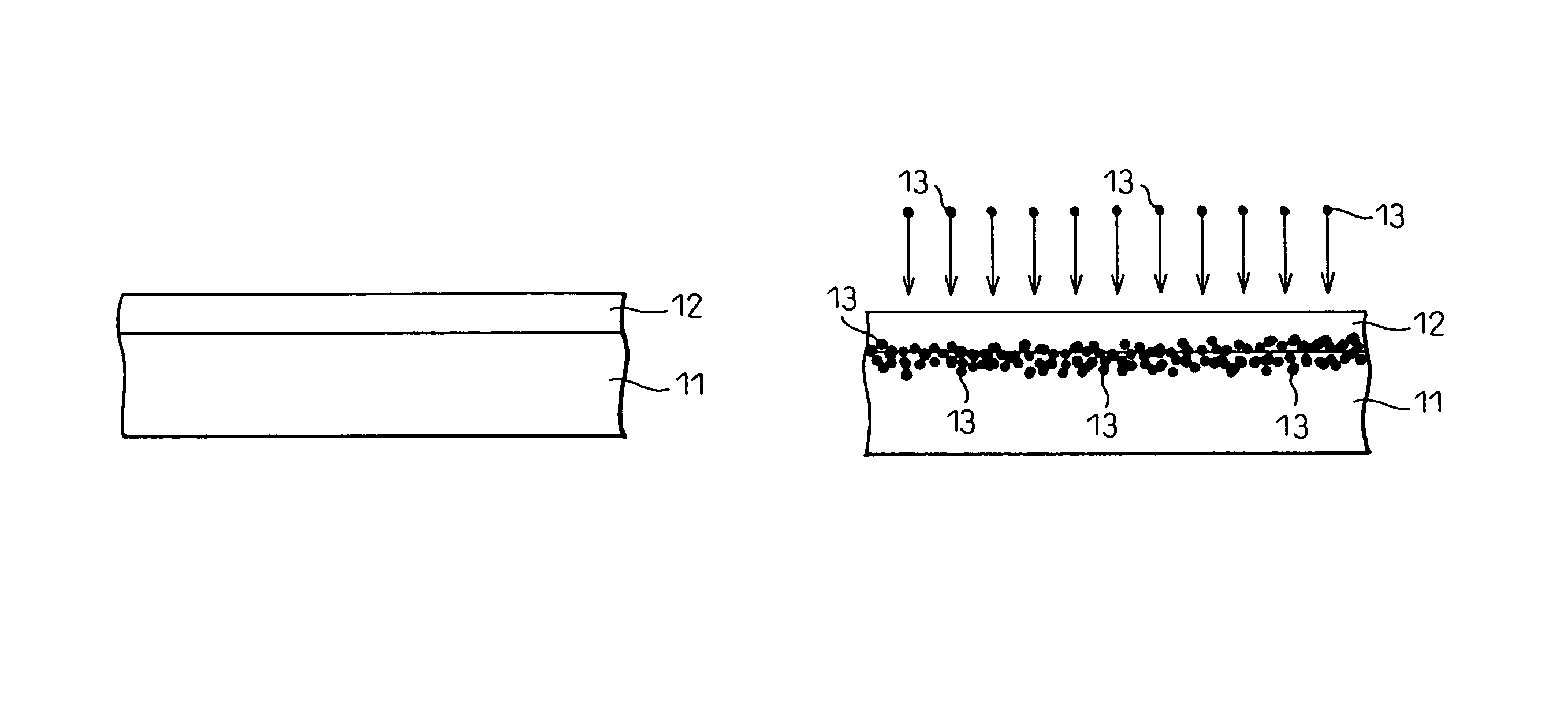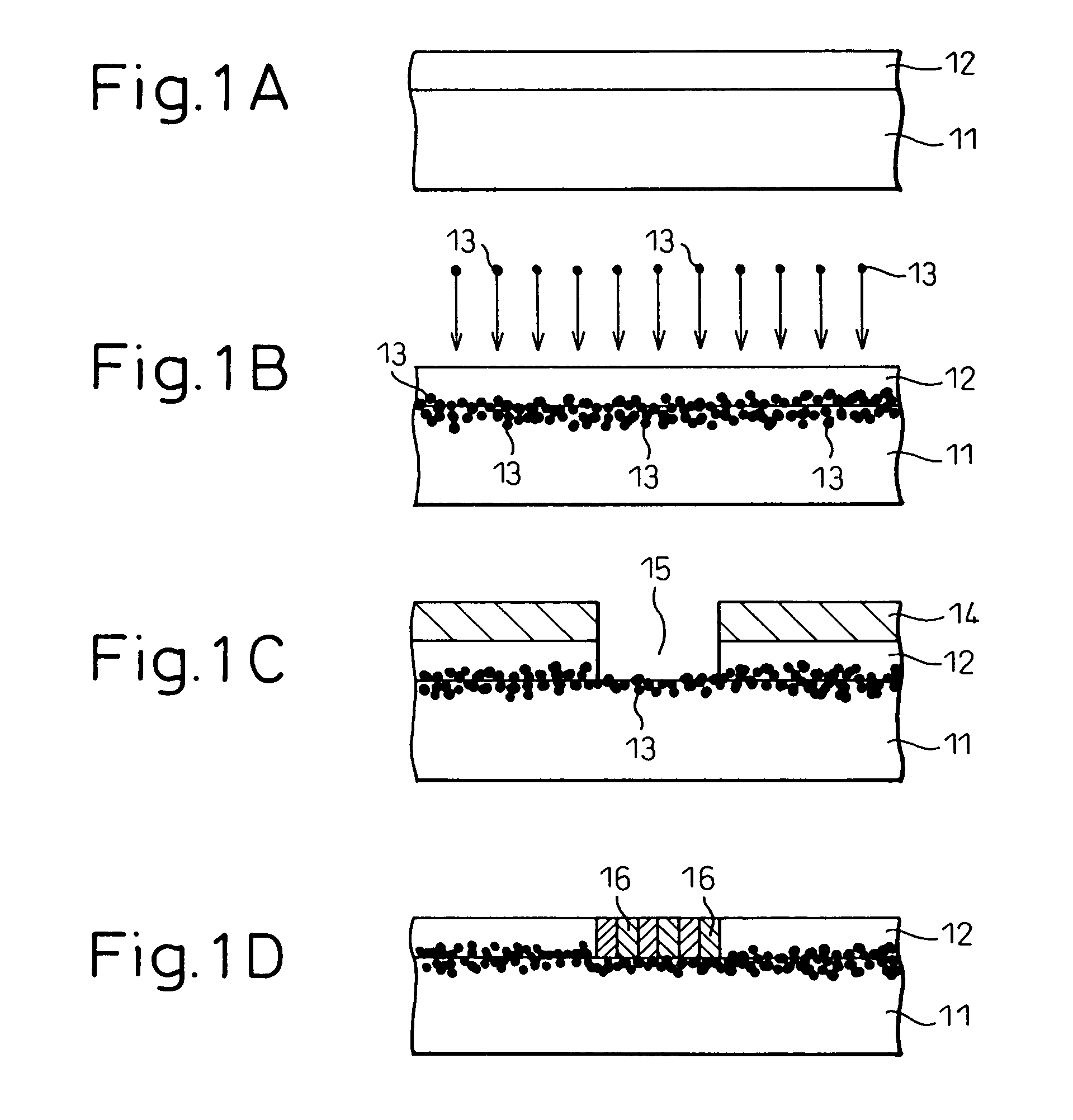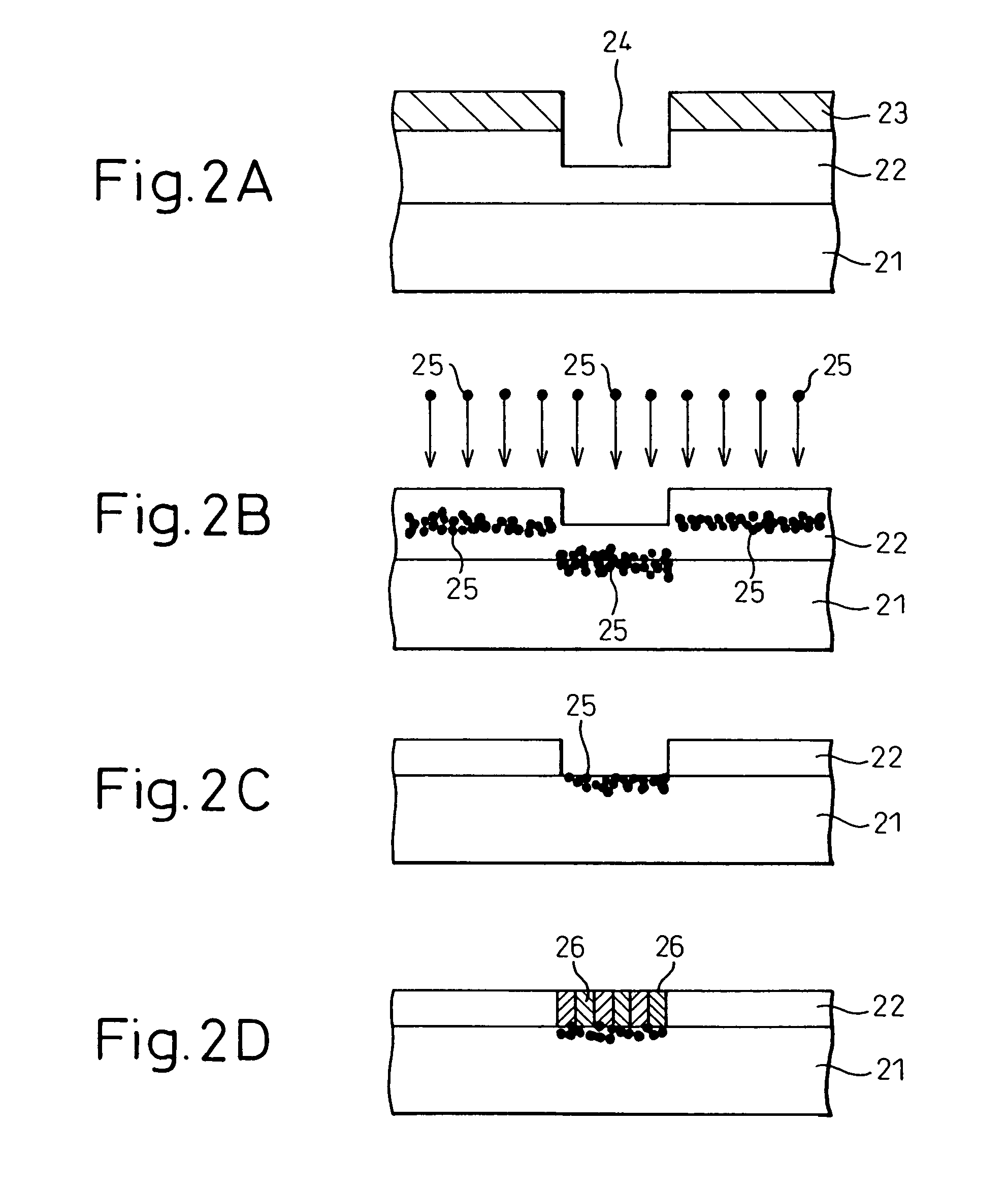Method of manufacturing carbon cylindrical structures and biopolymer detection device
a technology of biopolymer detection and carbon cylindrical structure, which is applied in the direction of chemically reactive gas coating, crystal growth process, chemical vapor deposition coating, etc., can solve the problems of difficult to fabricate the micro-particles of catalyst metals with diameter controlled in the range of nanometers, and the method of arc discharge or laser ablation is not suited to mass production or the manufacture of integrated circuits, etc., to achieve the effect of easy diagnosis
- Summary
- Abstract
- Description
- Claims
- Application Information
AI Technical Summary
Benefits of technology
Problems solved by technology
Method used
Image
Examples
example 1
[0180]An example is described below in which carbon nanotubes were grown on a silicon substrate following the steps described with reference to FIGS. 1A to 1D.
[0181]First, a 50 nm thick SiO2 film was formed by a plasma enhanced CVD on a silicon substrate. Then, Co ions were implanted through the SiO2 film with implantation energy of 65 keV in a dose not less than 1×1016 ions / cm2. Next, a resist pattern was formed on the SiO2 film, and SF4 dry etching was performed on the SiO2 film using the resist pattern as a mask to form an opening of 0.1 to 0.5 μm in diameter for growing carbon nanotubes. After the resist pattern was removed, plasma enhanced CVD was performed at 650° C. using methane gas (acetylene gas may be used instead) and hydrogen gas at reduced pressure of about 1.33 kPa (about 10 Torr) while a DC electric field was applied in a direction perpendicular to the substrate surface to thereby grow carbon nanotubes of 50 nm in the opening.
example 2
[0182]Next, an example is described below in which carbon nanotubes were grown on a silicon substrate following the steps described with reference to FIGS. 2A to 2D.
[0183]A 100 nm thick SiO2 film was formed by a plasma enhanced CVD on a silicon substrate, and a resist pattern was formed thereon. Using this resist pattern as a mask, the underlying SiO2 film was etched to midway, by controlling the duration of etching, to form a hole (recess) of 0.1 to 0.5 μm in diameter and 50 nm in depth for growing carbon nanotubes. After the resist pattern was removed, Co ions were implanted with implantation energy of 65 keV in a dose not less than 1×1016 ions / cm2. Then, anisotropic etching was performed on the SiO2 film using SF4 dry etching to dig into the SiO2 film in the hole for about 50 nm in vertical direction and to thereby expose the silicon substrate surface, while Co ions remaining in the SiO2 film in other region were removed. Then, carbon nanotubes were grown on the exposed silicon s...
example 3
[0184]In this example, as shown in FIG. 3, fullerene chemically modified with a catalyst metal was used as seed material for growing carbon nanotubes by a plasma enhanced CVD method.
[0185]First, fullerene was dispersed in water, and Ni ions and surface active agent (cyclodextrin) were added to the solution to chemically modify the fullerene with Ni.
[0186]Next, a solution of fullerene chemically modified with Ni was coated to a Si substrate (length 10 mm×width 10 mm×thickness 0.5 mm), and by patterning in a lithography method, fullerene chemically modified with Ni was disposed at optional position on the substrate to grow carbon nanotubes by a plasma enhanced CVD method.
[0187]The plasma enhanced CVD method was performed using a plasma enhanced CVD apparatus 9 as shown in FIG. 4, including a cylinder box 5 and a microwave power source 7 of 2.45 GHz as the excitation source. The substrate 8 was disposed in the vacuum chamber 3, and growth of carbon nanotubes was performed under pressur...
PUM
| Property | Measurement | Unit |
|---|---|---|
| diameter | aaaaa | aaaaa |
| diameter | aaaaa | aaaaa |
| size | aaaaa | aaaaa |
Abstract
Description
Claims
Application Information
 Login to View More
Login to View More - R&D
- Intellectual Property
- Life Sciences
- Materials
- Tech Scout
- Unparalleled Data Quality
- Higher Quality Content
- 60% Fewer Hallucinations
Browse by: Latest US Patents, China's latest patents, Technical Efficacy Thesaurus, Application Domain, Technology Topic, Popular Technical Reports.
© 2025 PatSnap. All rights reserved.Legal|Privacy policy|Modern Slavery Act Transparency Statement|Sitemap|About US| Contact US: help@patsnap.com



